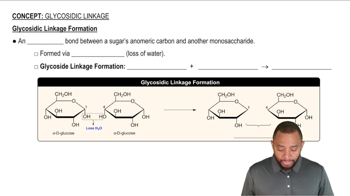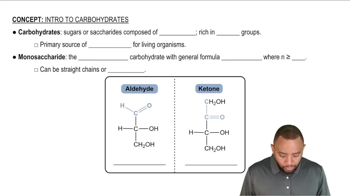Write the products for the following condensation or hydrolysis reactions:
a.

 Verified step by step guidance
Verified step by step guidance Verified video answer for a similar problem:
Verified video answer for a similar problem:



 3:39m
3:39mMaster Types of Disaccharides Concept 1 with a bite sized video explanation from Jules
Start learning